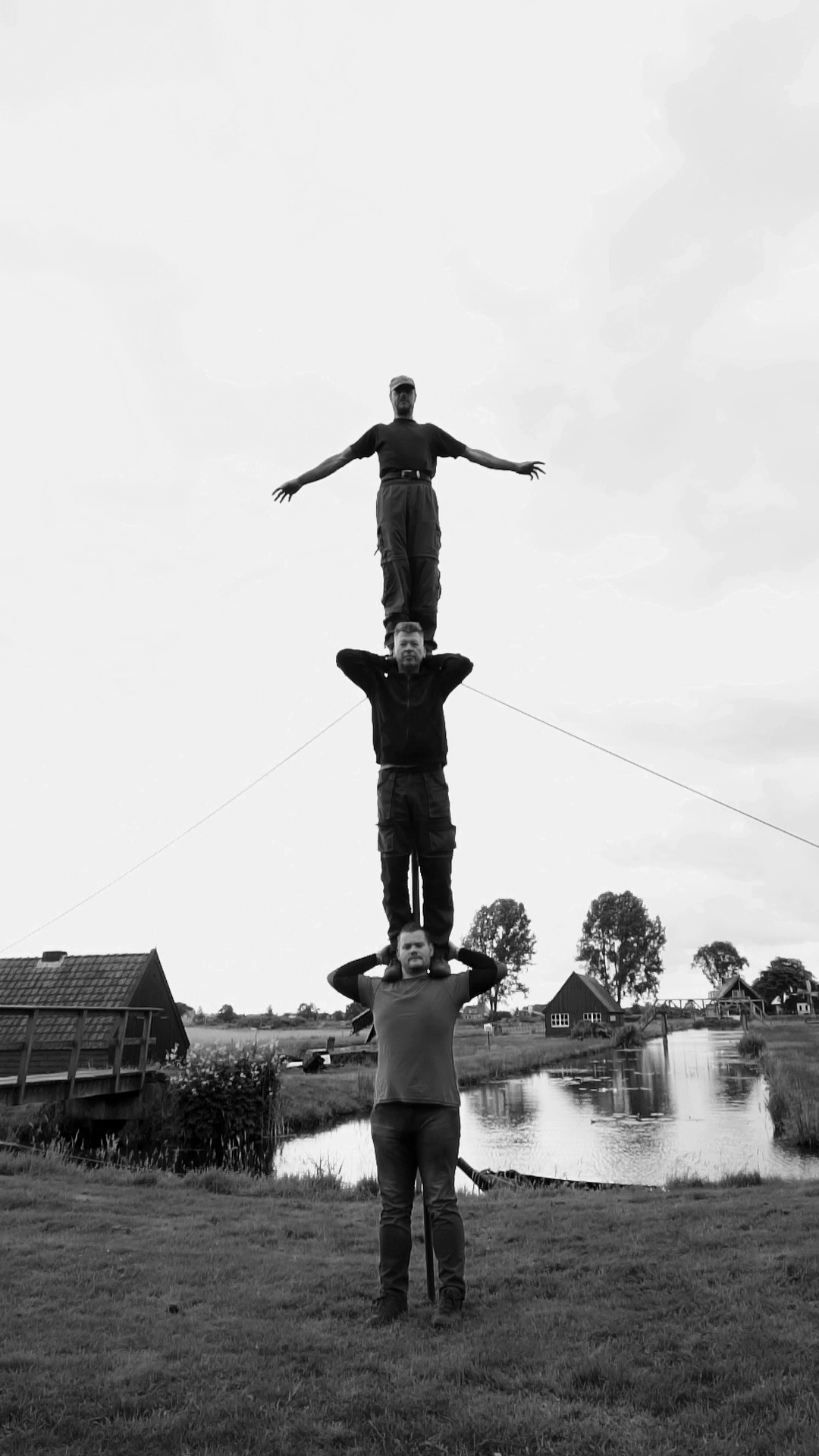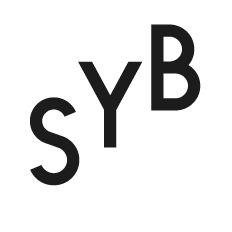15 June till 13 July 2014
MEASURING FRISIANS AS ART
Review by Marian Cousijn

Three Man High is the outcome of the summer residency by Søren Thilo Funder and Tina Helen at Kunsthuis SYB. A project not only visually very strong, but also in which the role of the ‘artist in residence’ and the relation between art and science are researched in an intelligent and critical manner.
Imagine you’re an international artist, and you’re invited to take up a residency in Friesland, an area you know practically nothing about. Where do you start? Well, you type ‘Friesland’ into Google and end up on the Wikipedia webpage. That’s exactly what the Danish artists Søren Thilo Funder and Tina Helen did. Besides information about history, location and politics, they found one curious header on the page that almost seemed to be too good a reason for an artwork.
Anthropometry
Since the late Middle Ages, Friesland has been renowned for the exceptional height of its inhabitants, who were deemed among the tallest groups of Indo-Europeans. Even early Renaissance poet Dante Alighieri refers to the height of Frisians in his Divine Comedy when, in the canticle about Hell, he talks about the magnitude of an infernal demon by stating that “not even three tall Frieslanders, were they set one upon the other, would have matched his height”.[13][1]
17th June
I speak to Funder and Helen at the start of their working residency. They have a clear plan for the coming months: they want to visualise an excerpt from Dante, to make a vertical portrait of three Frisians stacked on top of each other. Though exactly how remains unclear. The duo is currently busy trying to develop a strategy; possibly including the local gymnastics association, instructions for human pyramids, and ‘Fierljeppen’ (Frisian for far-leaping). However, they also take into account an outcome where the three Frisians would simply be lying on top of each other: the artists are, after all, entirely dependent on the goodwill and physical capacities of people prepared to lend their bodies in the name of art.
As the conversation continues, it becomes increasingly clear how sharp, critical, and on point the plan for Three Man High is. Behind what initially seems to be a simple reason for an art project, appears to lie a well thought out vision.
Firstly, with their project the artists reflect on their own position: as an artist in residence you’re dropped into a community that you know nothing about, and expected to contribute something useful to the local culture. But artists aren’t anthropologists, and four weeks is far too short a time to carry out any sensible research. Fortunately though, you can carry out nonsensical research: like measuring people, for instance. Registering height is a simple but effective form of scientific research. However, studying a society by simply measuring a number of people is almost insulting in its lack of depth and interest. Furthermore, anthropometry is a science with a rather dubious past, given that in the nineteenth century it led to the assumption that intelligence or a predisposition to criminality could be read from the measurements of a skull.
The artists’ critical position is also evident in their choice of using Wikipedia as a starting point. The found piece of text contains exactly the right ingredients for an artwork, according to Funder: it is poetic, includes a physical fact, is just arbitrary enough and, as a bonus, it has a wonderful literary reference. It’s almost too inviting to use. The artists are completely aware of this, for the project imparts a certain amount of self-mockery.
Considerable thought has also gone into the relation between art and science. The artists noticed how much art programmes have changed in recent years; entire academically correct dissertations about Foucault are no longer an exception. But wouldn’t this be better left to philosophy students? What kind of specific knowledge can you generate as an artist? Everything is expected of artists nowadays: that they carry out thorough scientific research, that they solidly contribute to finding solutions to social problems, that they have an opinion about climate change and immigration. But is that the role of artists?
That’s why Funder and Helen openly admit to using Wikipedia as their source of inspiration: for scientists it’s simply not done, but as an artist you’re free to do so. And hence, why they’re so interested in the notion of measuring. An act with the semblance of science, but it’s actually neither here or there: the artists in no way plan to carry out targeted research representative of the population. Seen purely scientifically, the research would be worthless. From a critical artistic point of view, however, the random measuring of passers-by can be very meaningful indeed.
The plans for the residency are intriguing and evoke curiosity with regards to the final result. Will they succeed in getting three down-to-earth Frisians to act a little crazy?
12th July
A month later, I’m back in Beetsterzwaag for the presentation of Three Man High. The fear of the project failing and ending in an awkward pile of people lying on top of each other has turned out to be unfounded. The portrait is a sure fate.
The exhibition space is empty, apart from a vertically placed video screen. Projected onto it is a black and white image. An idyllic Frisian landscape in which three big men stand solidly on top of each other’s shoulders. The man at the top has his arms spread out wide, resulting in the image being reminiscent of an impressive totem pole. The men wear sensible work shoes and zip-off trousers, their gaze is determined but not grim. They’re just standing there as if this bizarre deed is the most natural thing in the world.
The Frisian tower doesn’t wobble. Only the wind, toying softly with clothes, blowing rings in the ditch behind them, swaying the reeds, reveals this to be a video and not a photograph. If you look closely, you’ll see that the men are able to hold their balance by leaning against a pole. Without the pole the image would almost be boring in its perfection.
I’m impressed by what the artists were able to accomplish in four weeks: the artwork is particularly successful. While asking Funder whether the work is not too successful, I realise how strange this question actually is. Art doesn’t always have to horribly chafe and pinch.
We are tolerant of artistic failures, because they can be so very interesting. However, sometimes a project can just be carried out according to plan.
The success of Three Man High is the result of the mutual dynamic between Funder and Helen as an occasional duo. Helen’s work is normally speaking more focused on the process of collaborating with the community; through workshops, for instance. For Funder, it’s more important to present a finished end result. Their strengths are united in this project. The fact that the tall men enjoyed taking part, and that a perfect location was found – thanks to villagers – was down to luck, but then the sort of luck a good artist is able to compel.
Besides the video, the project also included a beautiful publication comprising three booklets that together form a visual research report. Part 1 features images of human towers (think of photographs of cheerleading pyramids) combined with anthropometric diagrams. Part 2 contains photographs of the completely non-representative research group of the 38 Frisians measured (average height: 186 cm. ‘We naturally singled out extra tall people,’ Helen states). The third booklet contains a collection of fascinating and curious historical images of people subjected to scientific experiments using measuring instruments.
Three Man High is an unusual project. Its end result is stunning: the video is poetic and visually very strong. The work can stand alone, however the accompanying publication offers an interesting insight into the artistic process. The position of contemporary artists is critiqued in an intelligent and open manner. Artists are increasingly deployed as an instrument, expected to do useful work that can be demonstrated as such. However, art and science are two completely different matters, and it’s just as well that art is occasionally permitted to be useless and somewhat strange.
translated by: Jenny Wilson
